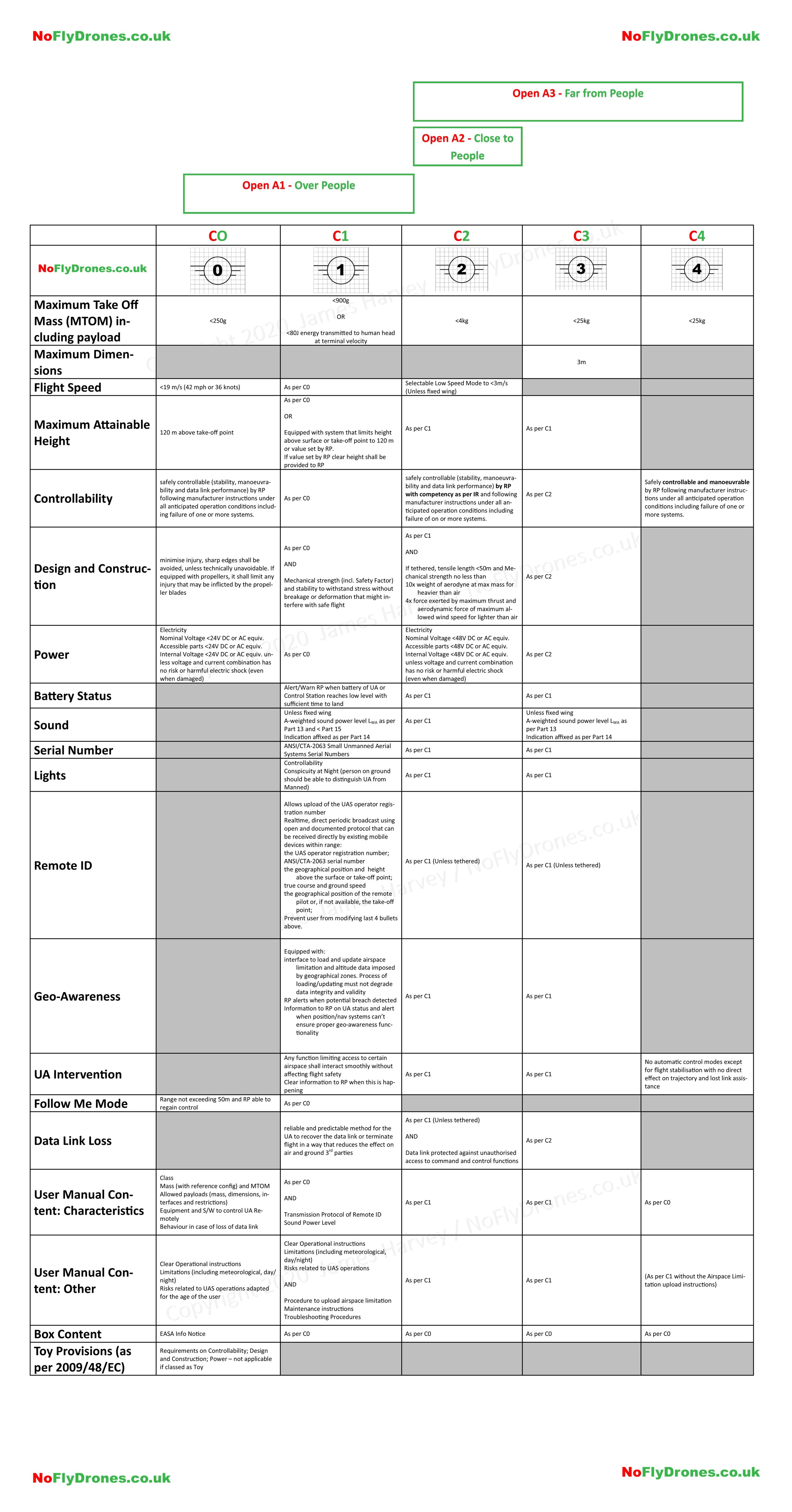If I cross-reference back to my post on the Open Categories. A1 was about flying over people and allowed the use of C0 and C1 aircraft which as you can see are the lowest weighted aircraft and have a maximum speed thus reducing the potential kinetic energy of the drone to a safe level, so this mapping makes sense.
A2 was about flying close to people, this permitted the use of C2, now although this is a heavier aircraft don’t forget you’re not allowed to overfly people, just close to them horizontally and only when in low-speed mode. Hence the C2 aircraft must have a low-speed mode embedded.
A3 was about flying far from people, i.e. 150m from a congested area, this allows for C2, C3, and C4. C3 and C4 are considerably heavier and so it makes sense that these would only be allowed far from people. Also, the requirements on C4 are much less rigorous and are more akin to traditional model aircraft hence they are unlikely to have things like height, GPS, lighting, Geo-Awareness, etc.
It’s worth noting that any drones with high-risk operations can not be used in the open category and will be subject to certification this includes situations involving transporting people, dangerous goods, more than 3m in dimension and designed to operate over people or anything else that a risk assessment deems it necessary to seek certification.
One final point. The EC are proposing some additional classes (C5 and C6) I will review this proposal soon and update this as necessary.
Small Print: These posts are a summary only, include my personal interpretation and is not intended to be a replacement for reading the actual rules.




